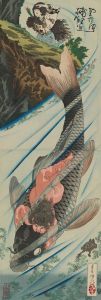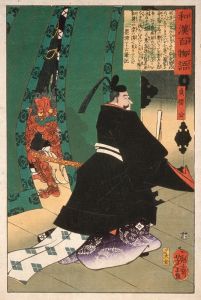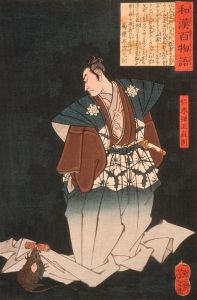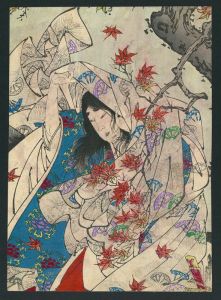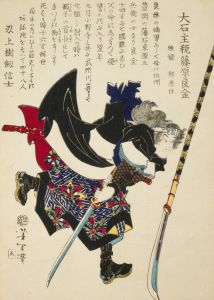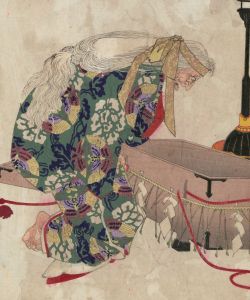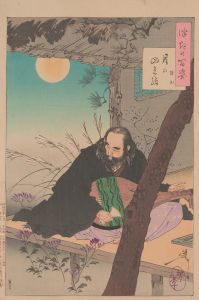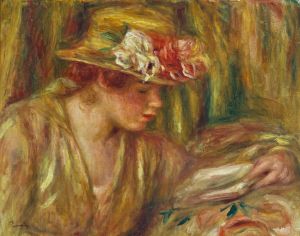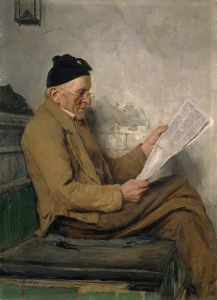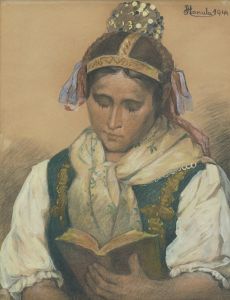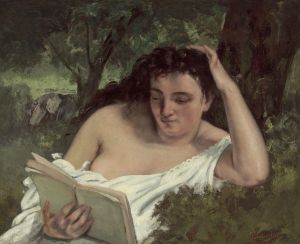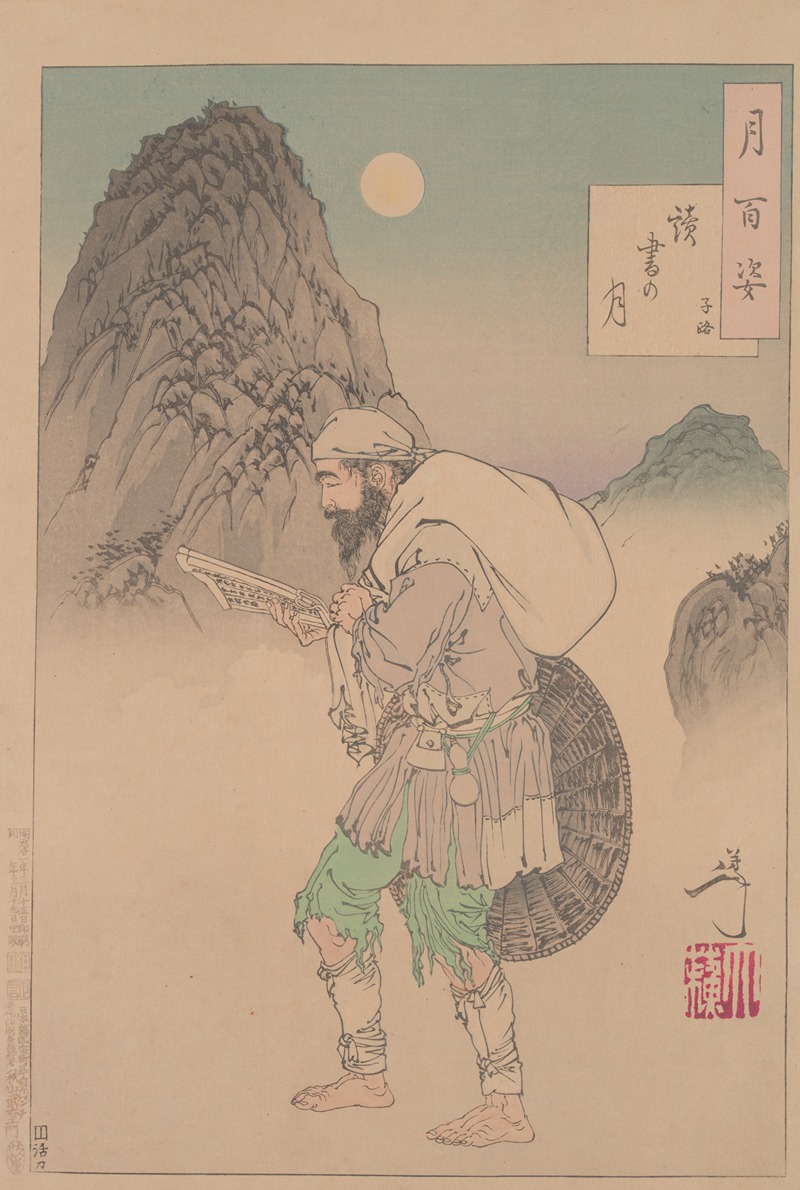
Reading by the moon
A hand-painted replica of Tsukioka Yoshitoshi’s masterpiece Reading by the moon, meticulously crafted by professional artists to capture the true essence of the original. Each piece is created with museum-quality canvas and rare mineral pigments, carefully painted by experienced artists with delicate brushstrokes and rich, layered colors to perfectly recreate the texture of the original artwork. Unlike machine-printed reproductions, this hand-painted version brings the painting to life, infused with the artist’s emotions and skill in every stroke. Whether for personal collection or home decoration, it instantly elevates the artistic atmosphere of any space.
"Reading by the Moon" is a woodblock print created by the renowned Japanese artist Tsukioka Yoshitoshi. Yoshitoshi, who lived from 1839 to 1892, is celebrated for his innovative contributions to the ukiyo-e genre, a style of Japanese woodblock printing that flourished from the 17th to the 19th centuries. His works often explore themes of beauty, horror, and the supernatural, reflecting the cultural and societal changes occurring in Japan during the Meiji era.
Yoshitoshi's "Reading by the Moon" is part of his acclaimed series "One Hundred Aspects of the Moon" (Tsuki hyakushi), which was published between 1885 and 1892. This series is considered one of Yoshitoshi's masterpieces and is highly regarded for its artistic and technical excellence. Each print in the series features a scene inspired by Japanese and Chinese history, literature, folklore, or legend, with the moon serving as a central motif.
In "Reading by the Moon," Yoshitoshi captures a serene and contemplative scene. The print depicts a figure engaged in reading under the gentle illumination of the moonlight. This imagery is emblematic of Yoshitoshi's ability to convey mood and emotion through the interplay of light and shadow, a technique that he mastered over his career. The moon, a recurring symbol in Japanese art and literature, often represents beauty, mystery, and the passage of time, adding layers of meaning to the scene.
Yoshitoshi's work is characterized by its attention to detail and the use of vibrant colors, which are evident in "Reading by the Moon." His prints often feature intricate patterns and textures, showcasing his skill as a draftsman and his innovative approach to composition. The artist's ability to blend traditional Japanese aesthetics with modern influences is a hallmark of his style, making his work distinctive and influential.
The "One Hundred Aspects of the Moon" series, including "Reading by the Moon," was produced during a period of significant transformation in Japan. The Meiji Restoration, which began in 1868, marked the end of the Tokugawa shogunate and the beginning of modernization and Westernization in Japan. Yoshitoshi's work reflects this transitional period, as he sought to preserve traditional Japanese culture while also embracing new artistic techniques and ideas.
Yoshitoshi's legacy endures through his prints, which continue to be celebrated for their artistic merit and cultural significance. "Reading by the Moon" exemplifies his mastery of the woodblock printing medium and his ability to capture the essence of his subjects with sensitivity and depth. Today, Yoshitoshi is regarded as one of the last great masters of the ukiyo-e tradition, and his works remain highly sought after by collectors and art enthusiasts worldwide.






